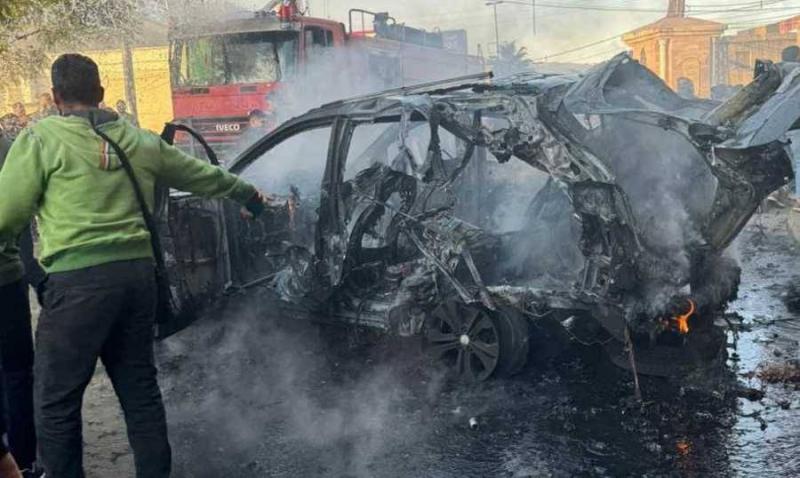For the first time since the outbreak of confrontations on the southern border on October 8, the center of Nabatieh city was the scene of an Israeli airstrike targeting leaders of "Hezbollah." The scene of the targeted vehicle resembled that of a vehicle struck by an American airstrike two days earlier in central Baghdad, which resulted in the death of prominent Iraqi "Hezbollah" leader Abu Baqar al-Saadi, according to "Nidaa Al-Watan."
With the airstrike in Nabatieh, Israel has once again crossed the red line that marked confrontations in the south four months ago. Israel had previously crossed this line deep into the southern suburb of Beirut by assassinating "Hamas" leader Saleh al-Arouri earlier this year.
What are the details of the Nabatieh airstrike, which is completely outside the Litani area? "Hezbollah" did not specify who was targeted in the strike, only announcing that two individuals were injured, one with severe wounds. Meanwhile, "Agence France-Presse" reported, citing a security source, that a military official in "Hezbollah" was wounded "critically" as a result of the Israeli strike on his vehicle in Nabatieh. Another person traveling with him was also injured. In response to a question from the agency about the strike, an Israeli military spokesperson merely stated, "We are looking into these reports."
The vehicle strike came at a time when "Hezbollah" had intensified its shelling of Israeli positions since yesterday morning, including the Ma’aleh Gilboa and Branite barracks and a command center in Kiryat Shmona, as announced in several statements. In Israel, the electronic site "The Times of Israel" reported on what Arab media stated, that one of the injured was Abbas al-Debs. The Israeli army radio noted that al-Debs was the commander of the area from which anti-tank fire was launched yesterday at the town of Kiryat Shmona in northern Israel. It said that the airstrike on Nabatieh was carried out in response to the launching of shells at an Israeli army base nearby, which critically injured one soldier.
Sources from Sky News mentioned that "Hezbollah's" overall military commander, Ali Karkhi, survived an attempt on his life in Nabatieh. Concurrently, the Israeli Air Force commander stated, "Dozens of our planes are active in the skies over southern Lebanon, and when necessary, they will turn into hundreds."
Additionally, according to "Nidaa Al-Watan," foreign diplomats have presented proposals to restore calm along the turbulent Lebanese-Israeli border alongside ongoing ceasefire negotiations in Gaza, according to officials. This includes the withdrawal of "Hezbollah" from the border and the deployment of thousands of additional Lebanese army troops.
The proposals put forth by European diplomats will rely on "partial implementation" of UN Security Council Resolution 1701 that ended a 34-day war between Israel and "Hezbollah" in 2006, as stated by two Lebanese political officials and a Lebanese diplomat residing in Europe to the Associated Press. It is noteworthy that French Foreign Minister Stéphane Séjourné raised a proposal in Beirut last Tuesday to ease tensions and warned that the border situation is "extremely concerning," and that Israel is serious in its threats against Lebanon, one of the Lebanese officials said. Séjourné stated, "There needs to be a Lebanese voice that speaks for Lebanon's interests. Constitutional institutions must be completed by electing a president because the absence of a Lebanese voice allows other countries to speak about Lebanon." He announced, "There are tangible proposals for after the ceasefire, but we are not discussing them publicly."




